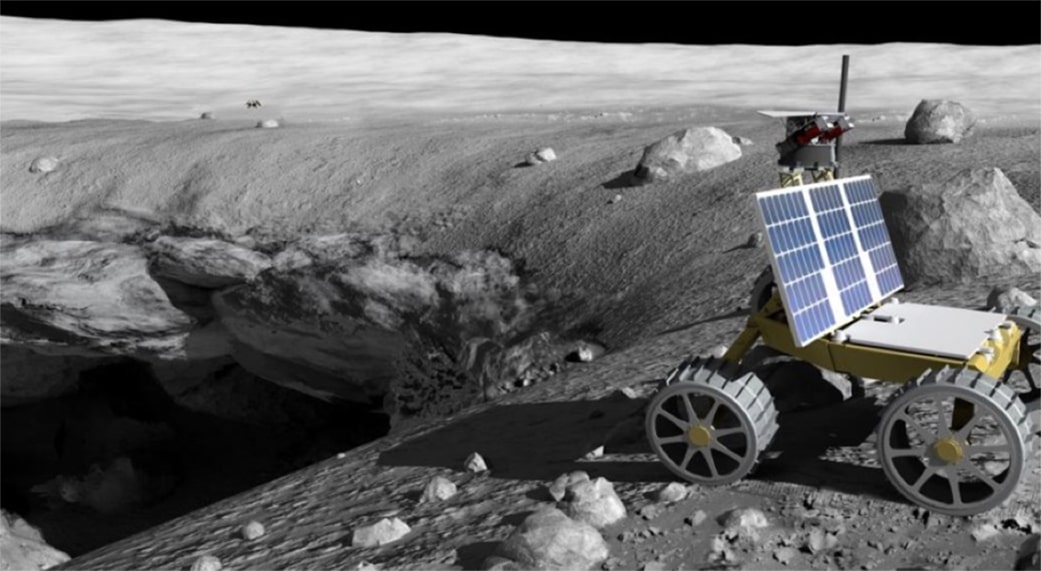The exploration autonomy includes planning of destinations and viewpoints for autonomous observations. Insitu processing computes high-fidelity models of vast 3D features. Rover mobility, energetics, and rich computing support continuous driving for the requisite speed and range. The autonomy, roving, and scientific-grade modeling combine to enable stunning one-week missions like modeling of a lunar pit, which is the context of this proposal.
The researchers are developing a “Skylight” mission to explore and model a lunar pit. Planetary pits are visionary destinations for exploration and science. They are gateways to caves which offer havens for human habitation and clues regarding ancient life on Mars. Descent into and exploration of the subsurface will come, but pit-specific questions must first be answered from the surface: How navigable are the rims? Are there caves? Are there rappel routes? What is the morphology? Specifically, a mission of this type would create and downlink the first high-res, science-quality, 3D model of a vast planetary pit. Such a mission would determine the navigability, existence of overlooks and rappel routes, terrain detail, and appearance of the rim. It would evaluate performance of the enabling technologies in mission context. The initiative’s benefit to NASA are (1) as a leap of autonomy, in-situ processing of data products, and fast, far roving relevant to all surface missions, (2) the science gained from actual missions such as pit exploration, ice characterization, and magnetic swirl analysis, and (3) its multi-mission relevance to the small, serial lunar CLPS-class landing opportunities of our time.

Brian Wang is a Futurist Thought Leader and a popular Science blogger with 1 million readers per month. His blog Nextbigfuture.com is ranked #1 Science News Blog. It covers many disruptive technology and trends including Space, Robotics, Artificial Intelligence, Medicine, Anti-aging Biotechnology, and Nanotechnology.
Known for identifying cutting edge technologies, he is currently a Co-Founder of a startup and fundraiser for high potential early-stage companies. He is the Head of Research for Allocations for deep technology investments and an Angel Investor at Space Angels.
A frequent speaker at corporations, he has been a TEDx speaker, a Singularity University speaker and guest at numerous interviews for radio and podcasts. He is open to public speaking and advising engagements.


Snake body robots by two tower solar panels. Most snake robots could stay around the solar panels. Each snake robot could also house an extension cable. First one travels as far as it can with extesion cord. Next one travel to end of snakebot latchtes in to snake power and goes on farther. Each snakebot does that in turn. When its time to explore different area or reorientate solar panels snakebots can push or drag it away.
Needs less wheels and more legs. A moon rated Big Dog.
Wheels are great for moving over smooth terrain but we want to go down in to craters and get out again.